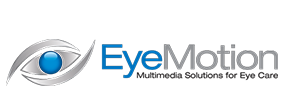Space, Science and Your Eye
“Space....the final frontier“ as Captain James T. Kirk from StarTrek quoted was all the buzz in the late 60s and 70s as NASA took our space program literally to the moon and back. Then came more orbiting satellites, piping fresh new information to our science hungry minds. Then, in 1980, the advent of the Hubble telescope changed everything. The telescope sent pictures of space with vivid vibrant colors, breathtaking pictures that eager science buffs could only dream of.
What does the science of space have to do with my eyesight you might ask. Well, the answer lies in the aerospace engineering that scientists at NASA used to help the space shuttle and rockets re-enter the earth's atmosphere. This same technology is used in laser vision correction for the eye. The angle of the laser beam and the amount of energy needed for a desired effect were both derived from the same science that NASA uses for space flight. Because the cornea of the eye is dome shaped, just like a planet, harmonious technology could be used to advance excimer laser refractive treatment of the eye. This laser technology is used to allow patients to have little or no dependency on glasses or contact lenses.
Refractive laser eye surgery has been popular since the 1980s and is used to correct patients who are nearsighted, farsighted, and have astigmatism. In most cases, patients can go without full glasses or contact lenses after their procedure. Additionally, this type of laser surgery can removes scars of the cornea and restore measures of vision.
Another fun fact is that the anatomy of the eye was used to restore function to the Hubble telescope. The Newsweek story goes like this: NASA in 1990 had just received news that their $1.5 billion scope was severely nearsighted, not able to focus on the objects at hand. Therefore a team of engineers, opticians, and optometrists were recruited to produce a “telescope contact lens” to go over the original flawed lens of the Hubble. NASA’s name and future funding were at risk. The $23 million contact lens worked, restoring space vision to the Hubble at last.
So next time you have experience with a contact lens on the eye to correct myopia (Nearsightedness) or see breathtaking pictures of our milky way from Hubble, thank the eye care profession for technology to peer into space...the final frontier!
The content of this blog cannot be reproduced or duplicated without the express written consent of Eye IQ.
